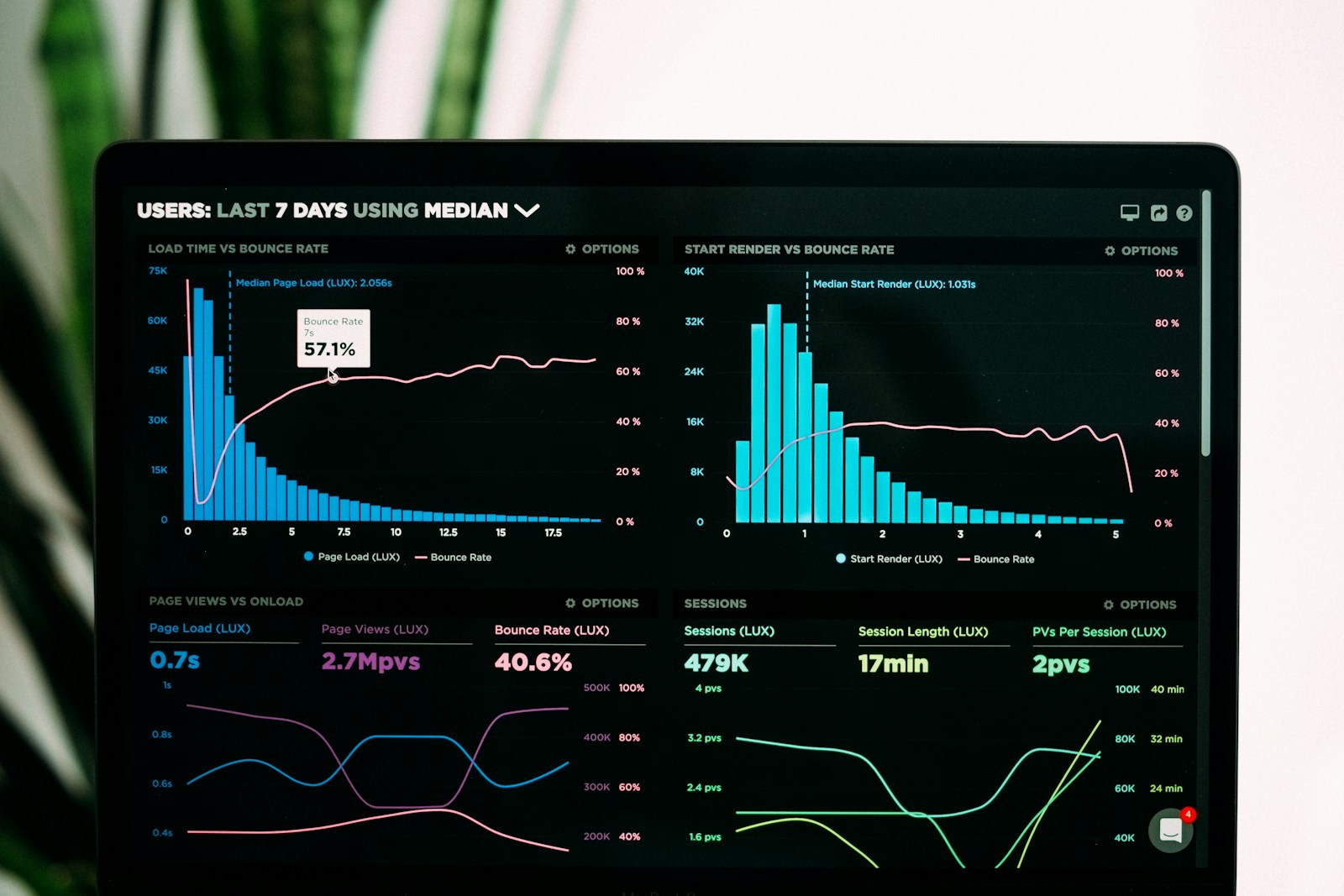Investors and traders in financial markets often use two primary approaches to analyze securities and make investment decisions: technical analysis and fundamental analysis. Both methods aim to predict future price movements and identify opportunities, but they do so in fundamentally different ways. Understanding the differences between these two approaches is essential for anyone involved in investing, trading, or financial analysis. What is Technical Analysis? Technical analysis is a method used to evaluate securities by analyzing statistical trends derived from trading activity, such as price movements and volume. It primarily focuses on historical data and market patterns, aiming to predict future price movements based on past behavior.
Key Concepts in Technical Analysis
Price Action
Technical analysis is based on the premise that all information needed to make a trading decision is already reflected in a security’s price. Price action, or the movement of a security’s price, is at the core of this analysis. For instance, if a stock consistently shows a certain pattern before rising, traders may anticipate a similar outcome in the future.
Charts and Patterns
Technical analysts use charts to track historical prices and identify patterns, such as head-and-shoulders, flags, and double tops, which can signal future movements. A head-and-shoulders pattern, for example, is often indicative of a reversal trend. Traders might use candlestick charts to gain insights into daily price changes and predict future trends.
Technical Indicators
These include tools like moving averages, Relative Strength Index (RSI), Bollinger Bands, and MACD (Moving Average Convergence Divergence). These indicators help traders identify trends, reversals, and overbought or oversold conditions. For example, the RSI can indicate whether a stock is overbought (above 70) or oversold (below 30).
Purpose of Technical Analysis
Technical analysis is primarily used by short-term traders who seek to profit from price fluctuations over days, hours, or even minutes. It is less concerned with the intrinsic value of the asset and more focused on the timing of trades. A day trader might use technical analysis to decide the precise moment to buy or sell a stock within a single trading day.
Advantages of Technical Analysis
- Quick Decision-Making: Technical analysis is ideal for traders looking for short-term opportunities, allowing for rapid entry and exit based on chart patterns and indicators.
- Market Sentiment: This approach gauges market psychology and investor sentiment, making it useful for understanding crowd behavior.
- Versatility Across Assets: Technical analysis can be applied to virtually any market, including stocks, commodities, forex, and cryptocurrencies.
Limitations of Technical Analysis
- Ignores Fundamentals: Technical analysis does not consider the underlying factors that may influence an asset’s value, such as company earnings, industry trends, or economic data.
- Subjectivity: Chart patterns and indicators can be interpreted differently by different traders, leading to inconsistent conclusions.
- Reliance on Past Data: Since technical analysis is based on historical data, it assumes that history tends to repeat itself, which is not always the case.
Practical Tips for Technical Analysis
- Use Multiple Indicators: Relying on one indicator can lead to false signals. Combine multiple tools, like MACD and RSI, for more reliable predictions.
- Backtesting: Simulate trades based on historical data to validate a strategy’s effectiveness before applying it in real trading.
- Stay Updated: Market conditions change, and so should your analysis methods. Regularly update your strategies to align with current market dynamics.
What is Fundamental Analysis?
Fundamental analysis, on the other hand, focuses on evaluating a security’s intrinsic value by examining related economic, financial, and qualitative factors. It involves analyzing a company’s financial statements, management, industry conditions, and broader economic factors to determine whether a security is undervalued or overvalued.
Key Concepts in Fundamental Analysis
Financial Statements
Fundamental analysts closely examine financial statements like income statements, balance sheets, and cash flow statements. They look at metrics such as earnings per share (EPS), price-to-earnings (P/E) ratio, and return on equity (ROE). For instance, a low P/E ratio might indicate that a stock is undervalued compared to its earnings.
Economic Indicators
Broader economic data, including GDP growth, unemployment rates, and interest rates, are considered to assess the overall economic environment in which a company operates. A rising GDP often signals economic growth, which could bolster corporate earnings.
Industry Analysis
Understanding the competitive landscape, market share, and industry trends is crucial in determining a company’s growth potential. For example, a tech company might be evaluated based on its innovation capabilities and market penetration.
Qualitative Factors
These include evaluating the company’s management team, business model, brand strength, and competitive advantages. A strong brand like Apple, for instance, can have a significant impact on consumer loyalty and pricing power.
Purpose of Fundamental Analysis
Fundamental analysis is commonly used by long-term investors who are interested in the value of an asset over time. It helps investors determine whether a stock is trading above or below its true value and make decisions based on long-term growth prospects. An investor might hold a stock for years, confident in its potential based on thorough fundamental analysis.
Advantages of Fundamental Analysis
- Focus on Long-Term Value: Fundamental analysis provides insights into the long-term prospects of a security, making it valuable for investors with a buy-and-hold strategy.
- Informed Decision-Making: By analyzing a company’s financial health and market position, fundamental analysis offers a deeper understanding of the factors driving its value.
- Risk Mitigation: Understanding the intrinsic value of a security helps investors avoid overpaying and reduces the risk of losses due to market volatility.
Limitations of Fundamental Analysis
- Time-Consuming: Analyzing financial statements, industry trends, and economic data can be labor-intensive and requires expertise.
- Delayed Reactions: Fundamental analysis may not capture short-term price movements, making it less suitable for traders seeking quick profits.
- Subject to Market Irrationality: Even if a stock is fundamentally sound, market sentiment or external events can cause its price to diverge from its intrinsic value.
Practical Tips for Fundamental Analysis
- Thorough Research: Dive deep into financial reports and industry news to understand the full picture of a company’s potential.
- Regular Updates: Re-evaluate your portfolio regularly to reflect any changes in a company’s fundamentals or industry conditions.
- Diversification: Spread investments across various sectors to mitigate risks associated with any single company or industry downturn.
Key Differences Between Technical Analysis and Fundamental Analysis
While both approaches aim to guide investment decisions, they differ significantly in their methodology, focus, and application:
1. Approach and Focus
- Technical Analysis: Focuses on price movements, charts, and patterns to predict future trends. It is primarily concerned with the market’s behavior and sentiment.
- Fundamental Analysis: Concentrates on evaluating the intrinsic value of a security by analyzing financial statements, economic data, and industry conditions.
2. Time Horizon
- Technical Analysis: Typically used by short-term traders who aim to capitalize on market fluctuations over short periods, such as days or weeks.
- Fundamental Analysis: Used by long-term investors looking to hold investments for months or years based on the asset’s growth potential and intrinsic value.
3. Tools and Techniques
- Technical Analysis: Utilizes charts, trend lines, support and resistance levels, and technical indicators like RSI and moving averages.
- Fundamental Analysis: Involves financial ratios, income statements, balance sheets, and qualitative factors like management effectiveness and industry trends.
4. Decision-Making Criteria
- Technical Analysis: Decisions are based on patterns, historical data, and the assumption that price trends will repeat.
- Fundamental Analysis: Decisions are driven by the belief that the market will eventually recognize and correct any mispricing, allowing the asset to reach its fair value.
5. Market Philosophy
- Technical Analysis: Assumes that all available information is already reflected in the price and that market trends and investor behavior are predictable.
- Fundamental Analysis: Assumes that price does not always reflect intrinsic value and that careful analysis can reveal mispriced opportunities.
How They Can Work Together
While technical and fundamental analysis are often seen as distinct approaches, many investors and traders use a combination of both to enhance their decision-making:
- Fundamental Analysis for Stock Selection: Investors might use fundamental analysis to select companies with strong financials and growth prospects. For example, identifying companies with a consistent record of revenue growth can be a good starting point.
- Technical Analysis for Timing: After identifying a fundamentally sound stock, technical analysis can help determine the optimal time to enter or exit the position. For instance, a trader might wait for a stock to reach a support level before buying.
This blend of strategies allows for a more comprehensive approach to investing, balancing long-term value with short-term opportunities. A well-rounded investor might use fundamental analysis to build a watchlist of potential investments and technical analysis to decide when to buy or sell.
Common Mistakes and How to Avoid Them
Overreliance on One Method
- Mistake: Exclusively relying on either technical or fundamental analysis.
- Solution: Integrate both methods to get a fuller picture of the market and the securities you’re interested in.
Ignoring Market Trends
- Mistake: Focusing solely on company fundamentals without considering broader market trends.
- Solution: Combine fundamental analysis with an understanding of market sentiment and macroeconomic trends to make more informed decisions.
Misinterpreting Data
- Mistake: Misreading charts or financial statements can lead to poor investment decisions.
- Solution: Continuously educate yourself and perhaps seek mentorship or training to improve your analytical skills.
Real-World Applications
Case Study: Apple Inc.
Let’s say you’re evaluating Apple Inc. using both analysis methods. From a fundamental perspective, you would examine Apple’s financial health, its product pipeline, and its market position. Apple’s strong brand and innovative product line could suggest long-term growth potential.
From a technical standpoint, you might analyze Apple’s stock price patterns. If you identify a consistent uptrend, this could reinforce your decision to invest. Combining both analyses might lead you to conclude that Apple is a solid long-term investment with favorable entry points based on technical trends.
Case Study: Tesla Inc.
For a company like Tesla, fundamental analysis might focus on its market share in electric vehicles, innovation in battery technology, and leadership under Elon Musk. Given Tesla’s volatility, technical analysis can be crucial for timing your investments. If Tesla’s stock breaks through a resistance level following positive earnings, it might signal a good buying opportunity.
Conclusion
Both technical analysis and fundamental analysis offer unique insights into the financial markets, but they serve different purposes and cater to different types of investors. Technical analysis is ideal for traders focused on short-term price movements and market trends, while fundamental analysis is better suited for long-term investors seeking to understand the intrinsic value of a security. Understanding the strengths and limitations of each approach allows investors to choose the method—or combination of methods—that best aligns with their goals and investment strategy. By integrating both approaches, investors can capitalize on the strengths of each, crafting a robust strategy that adapts to various market conditions.




